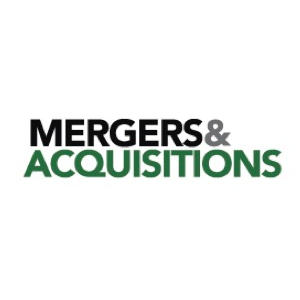Aerospace and defense M&A will soar, says Cassel Salpeter
By Keith Button
Sky high
Factos driving Aerospace M&A
- Global passenger air traffic growth
- U.S. tax reform and defense spending
- Historically low cost of capital
- Increased competition throughout sector
Aircraft and aircraft parts companies–including maintenance, repair and overhaul businesses–will feed a strong environment for middle-market deal making in aerospace and defense in 2018, according to new report from a Miami investment bank.
Cassel Salpeter & Co., which chiefly advises middle-market sellers in the sector, predicts in its Aviation Investment Banking Q1 2018 Update that tax reform and increased defense spending in the U.S. will help boost overall aerospace and defense M&A. Robust new jet plane orders and parts manufactured for those new planes will also contribute.
The key driver for the entire sector is the global increase in commercial passenger plane travel, says Joseph Smith, director, aviation services for Cassel Salpeter. According to the International Air Transport Association, passenger air traffic increased 7.6 percent in 2017, well above the 10-year average annual growth rate of 5.5 percent.
While the epicenter of the air traffic growth is in Asia, the effects are felt worldwide. The growth is fueling not only new passenger plane orders for Boeing Co. (NYSE: BA) and Airbus at the top of the food chain, but also business for the smaller maintenance, repair and overhaul companies— especially on engines; parts manufacturers, suppliers and distributors; providers of pilot flight simulators; airplane leasing companies; and secondary-market aircraft sales, repair and parts companies, Smith says.
“There are so many different levels and sublevels to the aviation/transportation supply chain marketplace,” Smith says. “It’s really very exciting from a growth driver perspective.”
The market for cargo planes—typically refurbished, middle-aged passenger planes–has also tightened recently with Amazon gobbling up aircraft to build its own fleet, in addition to demand from the traditional carriers like FedEx Corp. (NYSE: FDX), DHL and UPS (NYSE: UPS), Smith says.
Generally in the aerospace and defense M&A space, companies with Ebitda of more than $10 million can command acquisition prices of 10 times Ebitda or higher, Smith says. Prices fall to eight times Ebitda for companies under $10 million of Ebitda, and to five to seven times Ebitda for companies under $5 million. That means that sellers are looking for private equity firms as partners to help build their companies to the $10 million -plus Ebitda range for a “second bite of the apple” deal, when another PE firm or a strategic buyer will pay the higher prices.
“There’s a big delta between large middle-market and smaller middle-market companies,” he says. “The good news for those entrepreneurs and business owners is that the private equity world will pay up for being in the 10- to 15- plus Ebitda level. There’s so much money out there, and there’s so many different levels of financial sponsor buyers.”
According to the Cassel Salpeter report, 2017 was a record year for overall M&A in the aerospace and defense sector, with global deal value exceeding $70 billion. There were 454 total deals in 2017, about even with 2016, but the average deal size was $411 million, which was about 19 percent higher than 2016.
The volume of deals and the premium valuations are evidence that the sector continues to be a seller’s market, according to the report. The deal volume and price premiums, plus a historically low cost of capital, have produced some of the largest acquisitions ever for the industry. Increased competition throughout the aviation sector has put pressure on profit margins, creating demand for strategic growth, consolidation, supply chain synergies and partnership opportunities, according to the report.
Click here to view the original article.




